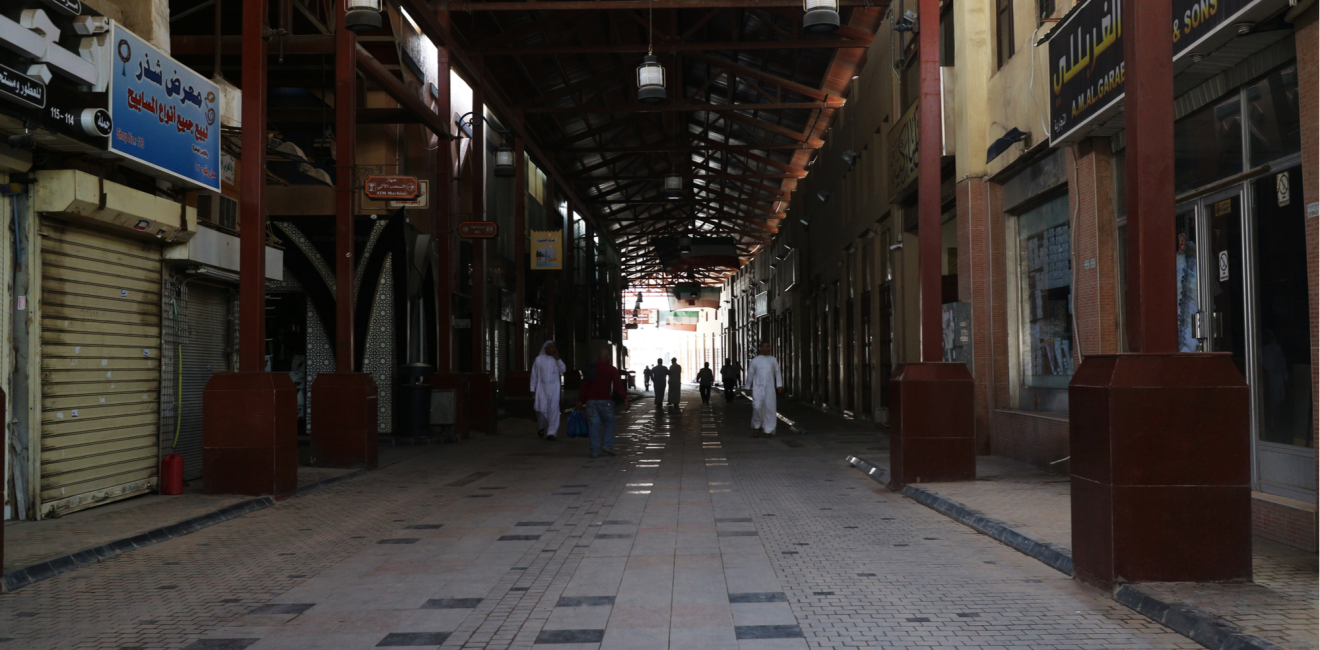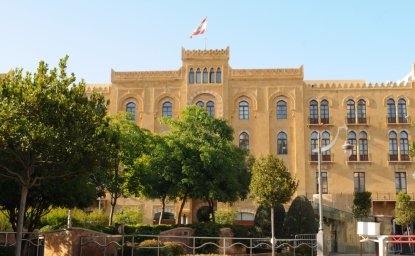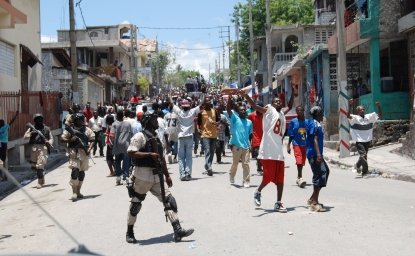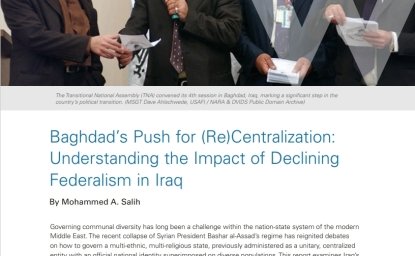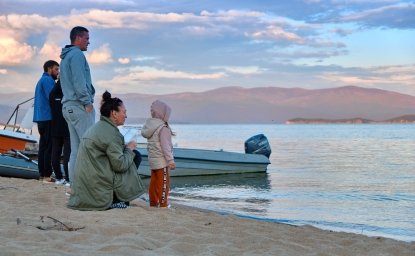More than ten years since the Arab world erupted into a collective cry for accountable governance, economic reform, and human rights, many now believe their countries have regressed. Syria, Yemen, and Libya slid into a decade of war as Iraq’s armed conflict intensified, leaving more than 11 million people internally displaced as of 2018. Tunisia and Egypt held democratic elections; yet Tunisia today is gasping from converging political and economic crises and Egypt relapsed into an arguably more oppressive military autocracy. Over the decade, political elites have augmented repressive and palliative tactics to counter the threat of an organized opposition.
With the added pressures of the pandemic, outrage against economic and political grievances will return with a vengeance.
Now a deadly virus has emerged; the first exogenous shock to shake the loose foundations of the new status quo. As of November 2020, COVID-19 claimed nearly 100,000 lives in the region and infected more than 3.4 million others. This pandemic is exacerbating the underlying social and economic conditions that triggered the first wave of Arab uprisings in 2011. Indeed, major public opposition movements reemerged just before the coronavirus in 2019 on the streets of Algeria, Sudan, Lebanon and Iraq. With the added pressures of the pandemic, outrage against economic and political injustices will return with a vengeance. But as the region learned a decade ago, it will take disciplined movements and reform-minded elites to implement the sustainable changes necessary to propel countries through a post-pandemic recovery.
Fragility on the rise
Numerous sectors in MENA were vulnerable to shocks prior to the pandemic, most importantly, health infrastructure was especially weak. According to the World Bank, many MENA countries suffer from limited investment in public health. Nearly half of health spending is covered directly by households and 65 percent of the workforce is employed in the informal sector, which lacks subsidized health benefits. This has left healthcare systems and local populations unequipped to handle the crisis, exacerbating preexisting economic and social insecurities. While countries in the Gulf Cooperation Council (GCC) countries enjoyed the fiscal capacity to expand medical coverage and procure the COVID-19 vaccine, the general unpreparedness of healthcare systems is a direct result of historic underfunding.
Meanwhile, unemployment has worsened. The region’s bloated public sectors were battered by declining oil revenues from suppressed global consumption and a near total shutdown to the tourist industry, causing economic contraction of 3.8 percent. Lockdowns, social distancing requirements, and curfews hit the informal sector especially hard. The UN estimates an additional 14.3 million Arabs will sink into poverty, swelling to more than 115 million. This will supercharge income inequality in the region, which is already the most unequal in the world. While the rich insulate their wealth, the disadvantaged will struggle for slowly returning jobs. Meanwhile, significantly more women than men have lost employment, erasing a decade of progress in gender equality, and will be pushed to the back of the line as opportunities reemerge.
Education was also a weak point before the shock. Globally, the World Bank estimates that school closures will reduce effective years of learning by 0.6 years. This impact on learning is likely to be higher for nearly 110 million children in MENA that were affected by school closures, placing 1.3 million at risk of dropping out of education altogether. UNICEF estimates that the number of children living in poor households could increase by an additional 10 million. The region’s already impoverished households have struggled to meet the demands of remote learning. Despite significant mobile broadband coverage, many countries experience internet penetration rates below 50 percent. The rush to reopen schools in in the region reflects not only concern for kids, but the lack of access to learning resources at home.
Governments will be hard pressed to restore even the limited economic stability that existed before the pandemic.
Consequently, one of the driving forces behind the Arab uprisings remains a prominent feature of daily life: a dismal economic outlook for a majority of the population. The fear caused by the pandemic has reduced public participation in demonstrations, but political issues such as corruption and mismanagement of health resources are center stage. The need for an economic overhaul will be a long and difficult process but remains on hold while pandemic conditions persist. Yet, public protests have already reemerged in the Algerian Hirak in recent weeks, and demonstrations have revealed tensions on the street in Jordan, Tunisia, and Egypt. Governments will be hard pressed to restore even the limited economic stability that existed before the pandemic.
The dilemma of economic reform
In order to generate strong productivity and stable jobs, MENA countries must embrace diversification and private sector led growth. The GCC is now rushing to accelerate unsatisfactory progress in diversification, distressed by the suppression of oil prices. Dr. Jihad Azour, Director of the Middle East and Central Asia Department at the International Monetary Fund, notes that Saudi Arabia’s Public Investment Fund will allocate around $40 billion annually to domestic businesses and the United Arab Emirates strives to adopt renewable energy sources in the future. However, these efforts emphasize the divide between wealthy and poor countries in the MENA region. In its economic forecast this year, the IMF fears slow recovery may portend resurgent civil unrest. Public outrage is already simmering, but the street does not always call for the necessary remedies.
In the case of Iraq, Marsin Alshamary, post-doctoral research fellow at The Brookings Institution acknowledges that private sector and civil service reform are in fact extremely unpopular, lacking both public and elite support. Citizens are aware they would pay for the short-term impacts: public sector salaries and employment opportunities would decline, adding to the already 7 million Iraqis that live in poverty. Meanwhile, elites have an incentive to preserve their networks of political patronage. Though optimistic about the opportunity for progress under interim Prime Minister Mustafa al-Kadhimi, Alshamary argues “he makes statements that seem like the direction of economic reform, but then backs down immediately.”
The reemergence of protests around the region reflects the desperation caused by the pandemic, in which lockdowns were particularly painful for the unemployed and those working in the informal sector.
The lack of prospects for reform reflects the dismal conditions that precluded the 2011 uprisings and may prevent a robust recovery. In Iraq, where oil prices comprise 90 percent of government revenue, protesters returned to the streets to demand more government jobs (reflecting the widely held notion that the government is a safe source of employment). In Tunisia, late January protests in poor suburbs around Tunis revealed the economic stress caused by lockdown restrictions, but directed grievances against the political class. A violent police crackdown and ban on protests until mid-February followed against the backdrop of a government reshuffle. The regime resorted to repression because it was ironically too weak to address the suffering of its citizens.
The reemergence of protests around the region reflects the desperation caused by the pandemic, in which lockdowns were particularly painful for the unemployed and those working in the informal sector. This incendiary situation will worsen during recovery if household incomes don’t quickly bounce back. However, protests without the authority of trusted political oppositions and movements will disrupt the reform process. MEP fellow Marina Ottaway writes protestors’ demands, “need to be translated into concrete policies… Such translation ultimately has to come from political organizations designed to participate in the political system and to influence decision-making.”
A return to resistance
This speaks to the challenge of achieving widespread reform in the region. David Linfield, Visiting Scholar at Carnegie’s Middle East Program and career Foreign Service Officer, states regimes must determine whether it is more costly to, “maintain the status quo and possibly become more brittle or incite protest, or is it riskier to embrace political change and displease elites.” (His views do not reflect those of the U.S. government). Despite increasing pressure from protestors and international organizations, regimes’ decisions to continue prioritizing their interests signals that reform is the more costly route.
Regimes fear any change might be coopted by protestors as a weapon against the political elite. “They take the opposite lesson that others take: they look at the Arab Spring and think, if you give protestors an inch they will take a mile,” argues Linfield. Although, the pandemic reveals the depths of the economic crisis, and the population’s vulnerability to external shocks, as a result, “once public attention turns away from the immediate health crisis and it is less of a distraction, we will probably see a return to similar types of protest movements.” The publics’ livelihoods, especially segments most marginalized and disenfranchised, are severely impacted by the economic downturn and what is perceived as disjointed approach to pandemic mitigation and slow vaccinations measures.
Moreover, the aggravation directed at ruling regimes reflects a deeper rejection of public mismanagement that might manifest into a reemergence of popular protest after pandemic restrictions are loosened.
Unless recovery efforts are coupled with aggressive reforms in governance to tackle corruption and seriously and improve public services, growth and development will be limited and the standards of living will remain low. Structural economic reforms are also much needed to help rebuild the private sector and ensure more inclusivity in economic development programs. Moreover, the aggravation directed at ruling regimes reflects a deeper rejection of public mismanagement that might manifest into a reemergence of popular protest after pandemic restrictions are loosened.
Countries must urgently respond with government-driven investment in populations, public services, and infrastructure, complemented by measures to prevent the further slide of many into desperation. This will require deliberate changes to government accountability, as well as recognition of civil society and opposition groups. It also requires political parties and social movements to channel public frustration in constructive ways and willingness to negotiate with elites and centers of power. Without changes to state-society relations, a side-effect of the pandemic may be the unleashing of similar revolutionary forces that led to the 2011 uprisings. How governments and the private sector respond in the near future will determine the path towards more or less civil unrest in the region.
The views expressed in these articles are those of the authors and do not reflect an official position of the Wilson Center.
Authors



Middle East Program
The Wilson Center’s Middle East Program serves as a crucial resource for the policymaking community and beyond, providing analyses and research that helps inform US foreign policymaking, stimulates public debate, and expands knowledge about issues in the wider Middle East and North Africa (MENA) region. Read more

